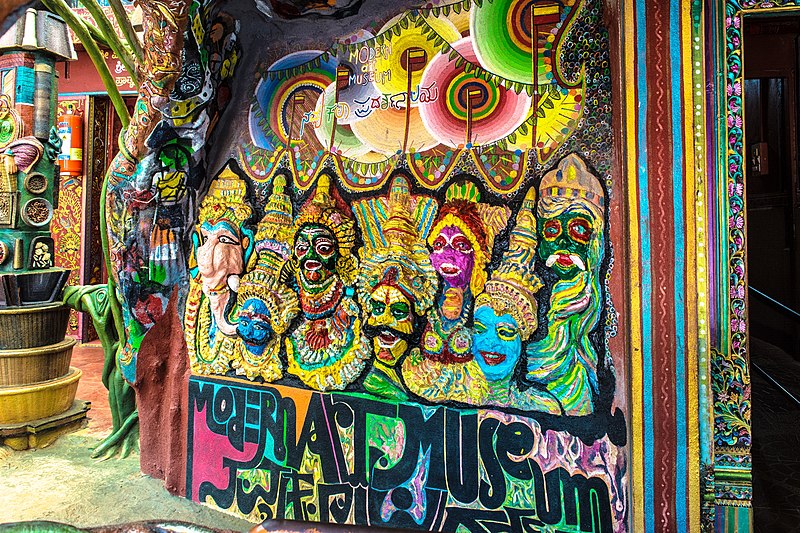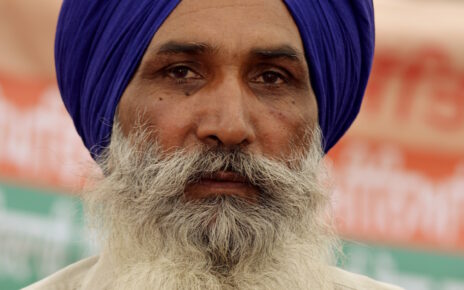The comparison between evangelical Christianity and EOC Christianity is their approach to the language. The Westerners use the mother tongue to translate Christianity to the Oromo and other ethnic groups to be converted to evangelical Christianity. The Amharas use the Amharic language and liturgical language Geez, the liturgical language of the EOC, to evangelize and dominate the Oromo and others. Many believe that even though the evangelical faith tradition requires conversion as a practice to join the Christian community, it was a liberating experience, not a dominating one.
However, I argue that the exclusivist approach of evangelical Christianity towards traditional and other religions, including the EOC, did not enable Ethiopians to live in the in-between consciousness and spaces. Evangelical Christianity that focuses only on spiritual salvation could not make it possible for Ethiopians to connect to their lived experiences in their respective contexts. So, I believe that evangelicals in Ethiopia need a theology that will enable them to be welcoming of all people through its direct response to political, social, and spiritual needs for agency, wholeness, and salvation, liberation and connection to God.
The development-centered approach of holistic theology makes Ethiopians objects. Most of the EECMY’s development activities were started by the missionaries. The missionaries came to Ethiopia with their Western religious and race categories that focused on developing the Other. Tumsa resisted the material development of the Western neo-paternal approach of the missionaries. However, holistic theology was not critical towards the systemic theological and racial categories that were integrated in Western theological studies.
The fundamental theological beliefs and practices were in conformity with the missionaries’ approach, and they did not question the progressive worldview of the Protestant tradition that integrated conversion with oppressive colonial practices. However, Tumsa and the EECMY leaders never criticized the Ethiopian church’s failure to address sexism and gender discrimination in the Ethiopian context.
Tumsa and the EECMY’s approach of integrated human development was critical to the political and missional challenges that the EECMY and Ethiopians faced. However, they never mentioned the Western and Ethiopian churches’ participation in racism, sexism, and gender discrimination and oppression. Since Ethiopia’s political and social arena was influenced by the Ethiopian Orthodox Church that focused on the patriarchs and only ordained male bishops and ministers, the EECMY’s holistic ministry should be clear about these issues.
At the same time, the missionary and development activities of the Western churches are associated with racially discriminatory and sexist ideologies that categorize black and brown bodies as female and powerless. However, the holistic theology of the EECMY was not critical enough to address the issues of race, gender, and sexism in the Ethiopian context and beyond. I think holistic theology has not been applicable for Ethiopians in identity politics because it cannot articulate how identities were shaped by gender, sex, and race issues from the West and the Ethiopian context. It focused on keeping the identity and mission work of the EECMY, and that made holistic
theology irrelevant to address the ongoing racial,
ethnic categories and identities that create a social and political crisis
for Ethiopians.
Moreover, I would argue that its resistance towards imposed Western and feudal ideologies was not holistic since it imported Protestant Bible translations and higher education as the main tools. Both the Bible translations and higher education exacerbated identity politics by emphasizing hereditary ethnic identity. Holistic theology did not enable Ethiopians to oppose a fictive Amharic identity but, instead, created an over determined hereditary ethnic identity. So, the EECMY and Ethiopians need a theology that will empower them to live in the in-between consciousness with intercultural and hybrid competencies.
Toward In-Between Theology
I identify as African, Ethiopian, Protestant, Amhara, and a female religious leader, so I have faced most of the challenges that identity politics created for Ethiopians. I am very much aware of the violence and conflict that ethnic fragmentation has created in the lives of Ethiopians. I have seen ethnic conflicts in religious organizations, regional states, families, and community groups. I am from the Amhara ethnic group and speak the Amharic language, which is the federal language of Ethiopia, and that makes me privileged.
On the other hand, as a Protestant who was raised in a regional state dominated by the Ethiopian Orthodox Church, I was always an outsider and a minority to my culture and community. And in the EECMY, my synod, which is from the northern part of Ethiopia, has small numbers and little representation. In my journey, I have learned that my diverse identities co-exist together. Of course, after I moved to the United States,
I learned that being Protestant or Amhara do not make me privileged here, since my only categories were black and African, and a powerless woman from a developing country. However, articulating my in-between theology enables me to resist the colonizing powers that make me feel powerless here in the United States as well as in Ethiopia. Identity politics that emerges from racism or ethnicity creates a sense of fundamental purity; in contrast, in-between theology elevates hybridity, interculturality, and plurality.
Before developing intercultural competence, I struggled to feel empathy for the people who resisted the Amharic language and all cultural identifications and impacts of Amhara identity. On the other hand, I felt excluded and minoritized due to a lack of belonging in my community. When I started my theological studies at the Mekane Yesus Seminary, I learned about the importance of diversity, inclusion, and justice for all Ethiopians.
The life stories and experiences of my peers who came from different regions of Ethiopia challenged my life. Hearing the pain and the frustration of diverse ethnic groups in Ethiopia empowered me to feel my own pain that I had carried for a long time. My experience in the United States gives me a more diversified worldview about my racial, gender, sexual, class, and economic status. It helped me to learn about my diverse and intersectional identities.
As I was raised in the EECMY, my reflection continues to construct a theological reflection that could enable me, the church, and Ethiopians to resist foundational identity fragmentations. The more I became aware of who I am, the more I was convinced that Ethiopians need theological reflection to resist Ethiopia’s era of identity politics. So, what I term “a theology of in-betweenness” comes from my own personal struggles and the experiences that I have faced as an individual within my community and church in Ethiopia and the United States.
The theology of in-betweenness resists identity politics and its fragmentations in the lives of individuals and communities. At the same time, in-between theology empowers people to live with an intercultural competence that allows them to co-create in-between spaces. I define in-between spaces as political spaces and public spaces that enable Ethiopians to claim their subjectivity and agency (and to live peacefully together without ethnic oppression/erasure). So, the move to in-between theological reflection is not fixed and universal because theologies are local and contextual. Local theological reflection allows those communities to respond to their embedded and embodied experiences with an authentic voice.
Brian Bantum, in his book Redeeming Mulatto: A Theology of Race and Christian Hybridity, invites us to participate with and in the mysterious nature of Christ’s humanity and divinity. His main claim is that Christ’s body is mulatto, a body that negates the racial, sexual, and gender-fixed definitions and categories of the 19th and 20th centuries.
To prove the mulatto nature of Christ, he uses the formula of Chalcedon. In the Chalcedonian formula, Christ’s nature is articulated as “neither/nor, but.”1
Bantum claims that the discipleship journey that starts by following the body of Christ creates discipled bodies that go beyond the racial categories. The disciples become part of the body of Christ that creates new bodies and possibilities. “To claim that Christ is mulatto is to interpret humanity Christologically.”2 The “neither/nor, but” identity of Christ bypasses fixed possibilities and expectations of being human, and invites humanity to participate in the new way of being human. As Chalcedon and other early church councils affirmed, the humanity and divinity of Christ is “the impossible possibility.” Bantum writes:
In this way mulatto/a identity is both discursive and embodied. The mulatto/a is not a positive identity, but rather a tragic identity of negation wherein its existence is marked by “neither/nor,” left to negotiated and perform itself into an illusion of purity thereby participating within a wider vision of national or racial hope.3
Incarnation resists a fixed humanity by negating borders of pure and impure, human and divine. The new way that Christ invites the disciples negates fixed racial categories.4 Jesus’s mulatto body invites and welcomes others to his “neither/nor, but” identity and body. In the modern world, mulatto bodies are excluded due to their inability to be labeled in one category, which is seen as impurity. However, when we accept the mulatto identity and body of Christ, we all are invited to be and live in the body of Christ, because “Christ gives birth to a mulattic people.”5 The cultural, racial, and ethnic diversities and neither/nor identities become a possibility for creating new possibilities.
Being in the body of Christ is an invitation for human beings to perform living and being in the new possibilities. Baptism is one of the main praxes that Bantum articulates to show how the disciples and the believers of Christ could participate in and with the mullatic body of Christ. He also uses prayer and discipleship as political praxes to empower people to continue being and participating in the new possibility of Christ’s body and identity that invite all to live beyond fixed identities.
Bantum’s mulatto or hybrid theology emphasizes the racially mixed or hybrid bodies. However, the hybrid bodies that I want to address are not only people who are racially mulatto. In the postcolonial context, hybridity is not only racial but social, spiritual, and political. The postcolonial people become hybrid due to imposed Western religious, theological, racial, and political praxes and ideologies.
Their hybridity was created due to their exposure to Western worldviews and colonial ideologies. Homi K. Bhabha claims that the postcolonial hybrid people use the in-between spaces to claim their agency and subjectivity to resist imposed and fixed racial categories and identification. I argue that the hybrid body of Christ also invites and empowers the postcolonial bodies to become “neither/nor, but” mulatto bodies so that they can resist imposed and fixed identities with new hybrid possibilities. Jesus models a new possible identity that does not match fixed identities. I also contend that the in-between identities surpass imposed ethnic and cultural identities to create a third possibility and space that empowers all to live into new possibilities. The invitation of Christ to hybrid and mulatto body is a liberating praxis so that the colonized bodies could be free to claim their agency.
Bantum uses prayer and discipleship as the theological praxes which could empower people to relate to their hybrid nature and relationship with the mulatto body of Christ. Bantum’s theological approach helps me to articulate how the mulatto bodies could be empowered with the incarnation of Christ, but it is not relevant for those who are not Christians. So, instead of focusing on prayer and discipleship, I would focus on the ministry of care and praxis. This focus enables me to empower people to live in the in-between spaces.
The theology of prayer and discipleship may include only people who are baptized and also part of the church community. In-between spaces include churches, but the churches are not the only space that people could participate in their hybrid identities to resist fixed and fragmented identities. As a Christian, I use Christian theology to show how hybridity is theological and supported by the theology of incarnation.
Still, I do not want to use an exclusive praxis that does not allow all Ethiopians to participate in their political and public space. Therefore, I would focus on care, which is and could be applied for all to be empowered and to live their hybrid identity to resist imposed colonial and political ideologies and practices. Moreover, Bantum uses early church sources to show the hybrid nature of Christ.
However, most of the early church decisions were made by the church fathers and silenced the voices of women and the diverse traditions associated with Christianity. Especially after Christianity became a state religion, it adapted the holy, universal, catholic teaching and image of the church. Postcolonial theologian Kwok Pui-lan writes:
The most hybridized concept in the Christian Tradition is that of Jesus/ Christ. The space between Jesus and Christ is unsettling and fluid, resisting easy categorization and closure. It is the “contact zone” or “borderland” between the human and the divine, the one and the many, the historic and the cosmological, the Jewish and Hellenistic, the prophetic and the sacramental, the God of the conquerors, the God of the meek and the lowly.6
Kwok claims that the New Testament images of Jesus Christ are hybridized and plural and can bring people together.7 However, in the second century, the church offices and ministry became patriarchal, and the offices of bishop and deacon were limited to men, and the emperor led most of the church councils. Men became holy and transcended their carnality by focusing on creeds, doctrines, and liturgy. Hypertranscendental masculine decisions and teachings differentiated themselves from the feminine orders of virginity and maternity. And the female body became the example of carnality, sex, and evil.8
As David Chidester claims, the modern world authenticated and justified colonization, slavery, labor, and resource exploitation in South Africa and other African countries through theological and religious teachings. The imperial colonial theorists and the missionaries fed each other for the development and the growth of their empire.9 In both the early and later modern world, theological claims, and knowledge were the source of oppression and colonization.
For this reason, I contend that it is always important to articulate how other voices such as black, feminist, African, liberation, and global southern nations use the hybrid image of Christ to articulate their in-between identities and their belonging in the in-between spaces. The in-between identity that Jesus Christ manifested by being human and divine transgresses fixed and universal ways of being and knowing. It empowers us to live in the in-between spaces. The in-between spaces allow people from diverse perspectives to come together and celebrate their diversities beyond the cultural, political, and social differences.
Conclusion
Even though the EECMY is mostly addressed as a church that was imported to Ethiopia, I claim that the EECMY is a church that demonstrates a hybrid identity of being Western and Ethiopian at the same time. Western missionaries and converted Ethiopians created and established the EECMY. The Protestant faith tradition or evangelicalism in Ethiopia is different from the traditional and historical Ethiopian Orthodox Church that has a deep connection with the feudal Ethiopian emperors and kings since the theology of the church affirms and assigns the kings to be the leading voice of Ethiopians.
The evangelical tradition in the Ethiopian context starts by being a voice for the voiceless, especially for the ethnic groups in the Western and Southern parts of Ethiopia. It opened doors for education and progress for Ethiopians and oppressed ethnic groups to learn about their ethnic and cultural identification.
The holistic theology that Gudina Tumsa fashioned with the EECMY church leaders was one of the leading theological responses of the Ethiopian and African churches to resist imposed internal and Western theological, cultural, and religious practices and norms. The holistic ministry of the EECMY resisted imported political ideologies such as socialism and communism, which exclusively rejected Ethiopians and Africans spirituality.
At the same time, holistic ministry resisted a Western pietistic theological approach that focused on saving the soul by excluding the physical and material needs of Ethiopians and Africans. The integrated human development vision and theological claim of the EECMY invited all to be the voice for the poor and the oppressed. However, in this essay, I argue that holistic ministry and theological reflection that enabled the EECMY to resist imposed socialist and feudal ideologies and practices did not work for resisting the identity politics that expose Ethiopians to ethnic conflict and war.
My main theological response comes from my own embodied experiences about my own diverse identity and need for in-betweenness. The theology of in-betweenness resists fragmented identities by focusing on empowering bodies to claim and negotiate their hybrid identities in the in-between spaces. I used a theology of incarnation to show how God’s presence among and with human beings becomes a way for demonstrating hybrid identities. The humanity and divinity of Christ that creates a new incarnational being of the divine and human in Jesus Christ opens and invites a new way of being human for all nations.
Rode Molla is an assistant professor at Virginia Theological Seminary.
______________________________________________________________________________
1 Brian Bantum, Redeeming Mulatto: A Theology of Race and Christian Hybridity (Waco, Texas: Baylor University Press, 2010), 89.
2 Bantum, Redeming Mulatto, 88.
3 Bantum, Redeeming Mulatto, 91-92.
4 Bantum, Redeeming Mulatto, 97.
5 Bantum, Redeeming Mulatto, 112.
6 Kwok Pui-lan, Postcolonial Imagination & Feminist Theology (Louisville, KY: John Knox Press, 2005), 171.
7 Kwok, Postcolonial Imagination, 172.
8Kwok, Postcolonial Imagination, 3-13.
9 David Chidester, Empire of Religion: Imperialism and Comparative Religion (Chicago: University of Chicago Press, 2014), 161.




